

KUALA LUMPUR, Nov. 21 -- Chinese Premier Li Keqiang pledged his country's efforts to push forward several free trade agreements (FTA) with various parties at a series of East Asian leaders' and bilateral meetings here on Saturday.
Beijing eyes FTAs as a way to further open up to the outside world and speed up domestic reforms, an effective approach to integrate into the global economy and strengthen economic cooperation with other economies, as well as an important supplement to the multilateral trading system.
UPGRADE OF CHINA-ASEAN FTA
Li, addressing the leaders' meeting between China and the Association of Southeast Asian Nations (ASEAN), called on the two sides to accelerate the implementation of the results of the negotiations on an upgrade of their FTA.
The two sides should raise the level of trade and investment facilitation, so as to realize the target of scaling up their two-way trade to 1 trillion U.S. dollars by 2020, Li said.
The China-ASEAN FTA is the largest of its kind in developing countries that benefits the largest population of more than 1.8 billion.
The agreement came into effect on Jan. 1, 2010 and since then China has become ASEAN's biggest trade partner while ASEAN the third largest trade partner of China.
In addition, Li urged concerted efforts by China and ASEAN to conclude as early as possible the negotiations for the Regional Comprehensive Economic Partnership (RCEP).
The RCEP is a proposed collective FTA between the 10 member states of ASEAN and six countries with which ASEAN has individual FTAs: Australia, China, India, Japan, New Zealand and South Korea.
"As China continues to rise in the world, greater integration or opportunities and engagement between ASEAN and China is something positive," Singapore Foreign Minister Vivian Balakrishnan was quoted by The Straits Times, Singapore's highest-selling paper, as saying.
BILATERAL FTAS
When meeting his Australian counterpart, Malcolm Turnbull, on the sidelines of the leaders' meetings, Li said China is ready to work with Australia to put their FTA into effect as soon as possible before the end of the year.
Li also called on the two countries to raise the level of mutual investment.
China welcomes more Australian companies to invest and develop in China and hopes that Australia will provide more conveniences for Chinese investors, Li said.
China and Australia signed the historic agreement on June 17 in Canberra of Australia, finalizing negotiations that began 10 years ago.
Upon full implementation of the agreement, tariffs will be lifted on 95 percent of Australian exports, hurdles lowered for Chinese businesses to invest in Australia, and more visas granted for Chinese on working holidays.
The Chinese government has said in a statement that the signing of the FTA was a significant development because, of all the FTAs involving China, this one boasted the "highest level of overall trade and investment liberalization."
In a separate meeting with his New Zealand counterpart, John Key, Li called on the two countries to explore means to push forward an upgrade of their FTA.
An agreement to explore the upgrade of the FTA, signed in 2008, was reached during Chinese President Xi Jinping's visit in November last year and an assessment process was launched in March.
The Chinese premier arrived in Malaysia on Friday for the 18th ASEAN-China (10+1) leaders' meeting, the 18th ASEAN-China, Japan and South Korea (10+3) leaders' meeting, and the 10th East Asia Summit.
During his four-day stay in Malaysia, he is also to pay his first official visit to the country since taking office in March 2013.
 |
Day|Week

 118-meter-high Never-used Building in NW. China Demolished
118-meter-high Never-used Building in NW. China Demolished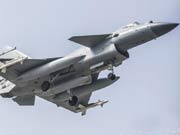 J-10B fighters with homegrown engine in test flight
J-10B fighters with homegrown engine in test flight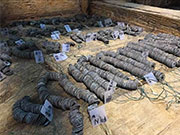 10 tons of copper coins unearthed in 2,000 years old ancient tomb
10 tons of copper coins unearthed in 2,000 years old ancient tomb Beautiful graduate from police college becomes Internet hit
Beautiful graduate from police college becomes Internet hit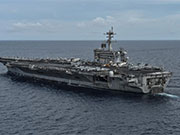 Photos of U.S. Navy intruding in South China Sea released
Photos of U.S. Navy intruding in South China Sea released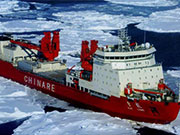 What is inside China's icebreaker ‘Xuelong’?
What is inside China's icebreaker ‘Xuelong’?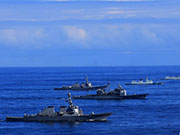 Chinese, U.S. navies hold first-ever joint exercise in the Atlantic
Chinese, U.S. navies hold first-ever joint exercise in the Atlantic In pics: skies of glory
In pics: skies of glory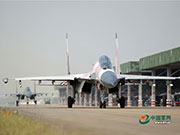 J-10, J-11, Sukhoi Su-30 fighters vs. HQ-9 anti-aircraft missile system
J-10, J-11, Sukhoi Su-30 fighters vs. HQ-9 anti-aircraft missile system Russian plane crash victims sucked out of seats as 'external impact' blew jet apart
Russian plane crash victims sucked out of seats as 'external impact' blew jet apart